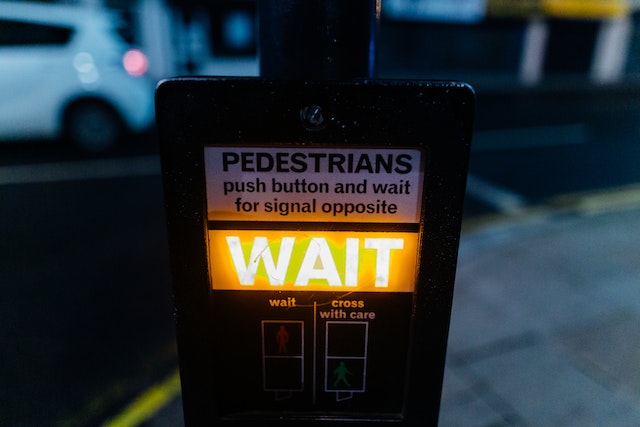The development of technology has transformed the world we live in, and the automotive industry has been no exception. From the first automobile to the most advanced self-driving cars, technology has played a significant role in the evolution of the automobile. As technology continues to advance, the impact on road safety cannot be overstated. In this article, we will explore the ways in which technology has impacted road safety and how it has changed the way we drive.
Advanced Driver Assistance Systems (ADAS)
Advanced driver assistance systems (ADAS) are technologies that are designed to assist drivers in avoiding collisions and improving overall safety. These systems are integrated into vehicles and are designed to alert drivers to potential hazards, assist with parking and reversing, and provide other safety features.
One of the most common ADAS features is lane departure warning. This system alerts drivers when they are drifting out of their lane, helping to prevent accidents caused by distracted driving or drowsiness. Another common feature is automatic emergency braking, which uses sensors to detect obstacles and automatically applies the brakes if the driver fails to respond to a potential collision.
ADAS technology has been proven to reduce the number of accidents on the road. In a study conducted by the Insurance Institute for Highway Safety (IIHS), it was found that vehicles equipped with front crash prevention systems had 50% fewer rear-end collisions than vehicles without these systems. Similarly, another study found that lane departure warning systems reduced the number of single-vehicle, run-off-the-road crashes by 48%.
However, it is important to note that ADAS systems are not fool proof, and drivers should not rely solely on these systems to prevent accidents. It is still important for drivers to practice safe driving habits and be aware of their surroundings while on the road.
Autonomous Vehicles
Autonomous vehicles, or self-driving cars, have been a topic of discussion for many years. These vehicles use a combination of sensors, cameras, and artificial intelligence to navigate the road and make decisions without the need for human input.
Proponents of autonomous vehicles argue that they have the potential to significantly reduce the number of accidents on the road. According to a study by the Eno Center for Transportation, self-driving cars have the potential to reduce traffic accidents by up to 90%.
Autonomous vehicles have a number of safety features built-in, including automatic emergency braking and lane departure warning. These features work in conjunction with the vehicle’s advanced sensors and algorithms to detect potential hazards and avoid collisions.
However, there are still many challenges to overcome before self-driving cars become a reality. One of the biggest challenges is ensuring that these vehicles are safe and reliable, especially in situations where the vehicle’s sensors and algorithms may not be able to detect potential hazards. Additionally, there are still legal and ethical questions surrounding autonomous vehicles, such as who is responsible in the event of an accident.
Connected Vehicles
Connected vehicles are vehicles that are equipped with wireless communication technology that allows them to communicate with other vehicles and infrastructure, such as traffic lights and road signs. This technology allows vehicles to share information about their location, speed, and other data, which can help to prevent accidents and improve traffic flow.
One of the key benefits of connected vehicles is that they can help to reduce accidents caused by driver error. For example, if a connected vehicle detects that another vehicle is about to run a red light, it can alert the driver to prevent a collision.
Connected vehicles can also help to reduce traffic congestion and improve the efficiency of the transportation system. By communicating with traffic lights and other infrastructure, vehicles can optimize their route and reduce the time spent idling in traffic.
However, there are also concerns about the security and privacy implications of connected vehicles. As vehicles become more connected, there is a risk that they could be vulnerable to cyber attacks, which could compromise their safety and the safety of other drivers on the road. Additionally, there are concerns about who has access to the data collected by connected vehicles and how that data is used.
Impact of Technology on Driver Behaviour
While technology has the potential to improve road safety, it can also have unintended consequences on driver behaviour. For example, the availability of features like lane departure warning and automatic emergency braking may lead drivers to become complacent and rely too heavily on these systems. This could lead to a false sense of security and increase the risk of accidents.
Additionally, the use of technology while driving, such as texting or using a mobile phone, can be a major distraction and increase the risk of accidents.
It is important for drivers to understand the limitations of technology and use it responsibly while driving. This includes avoiding distractions and staying alert and aware of their surroundings at all times.
Conclusion
Technology has had a significant impact on road safety, from advanced driver assistance systems to autonomous vehicles and connected vehicles. These technologies have the potential to reduce accidents on the road and improve the efficiency of the transportation system. However, it is important to remember that these systems are not fool proof, and drivers should not rely solely on technology to prevent accidents.
As technology continues to evolve, it is likely that we will see even more innovations in the automotive industry. It is important for regulators, manufacturers, and drivers to work together to ensure that these technologies are safe, reliable, and effective in reducing accidents on the road. By staying aware of the latest developments in automotive technology and practicing safe driving habits, we can help to create a safer and more efficient transportation system for all.

